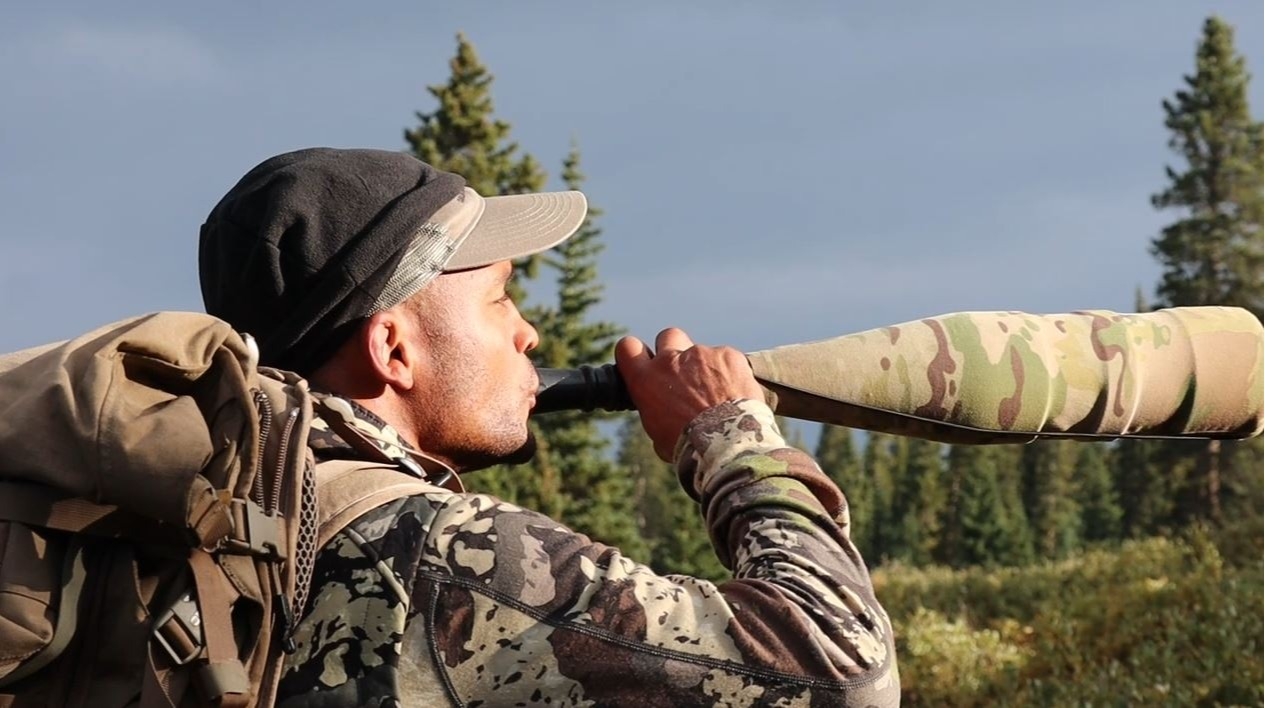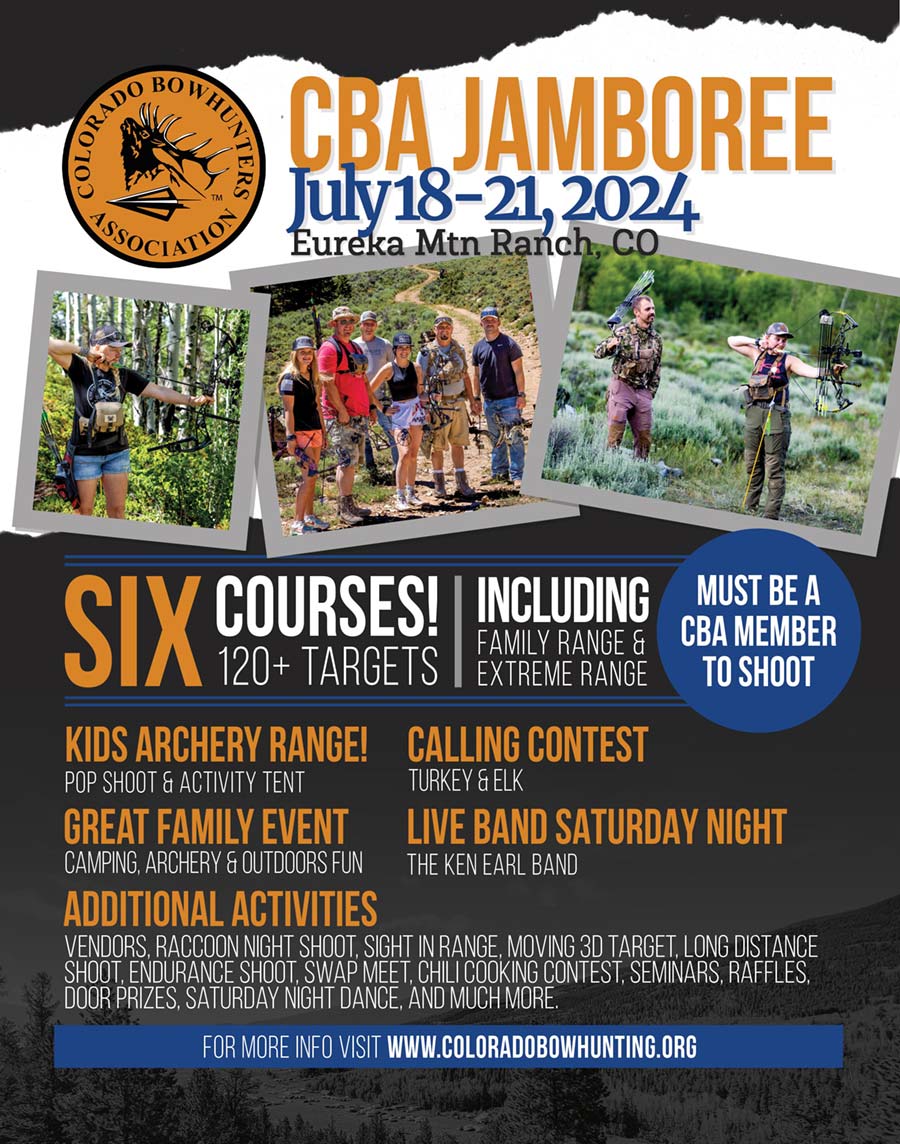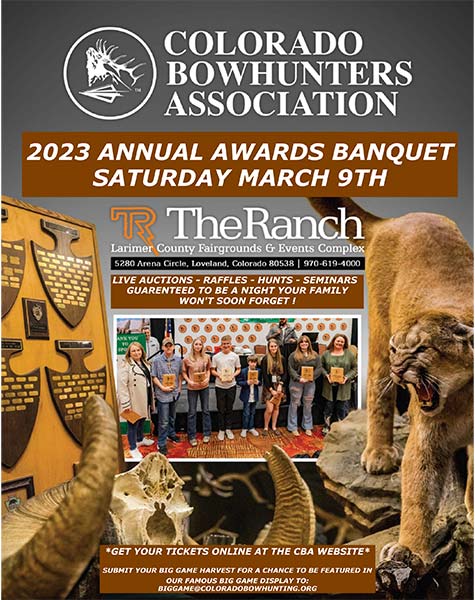5 Elk Strategies and 2 Pro Tips with Jermain Hodge
by Jermain Hodge
In this article I’d like to share a few tips about elk hunting that have helped me be successful early in my hunting career. My goal is to help you reduce your learning curve on how to communicate with elk and increase your chances of close encounters during archery season. You will learn the strategies I have picked up along the way that have aided me and my team to communicate with elk.
Like many hunters, I didn’t start hunting elk at an early age. I moved to Colorado in 2004 and truly fell in love with hunting, especially elk hunting. The first thing I learned, on my first elk hunt, was the importance of having proper equipment and being in good physical shape. It’s a good thing I’m an active wrestler.
Although having great gear and being in shape are important (and natural to me), getting close to elk is just as important. Keep reading to discover the strategies that have worked best for me. They are the ones I still use today.
When it’s hard to get the elk talking, open reed calls can be the game changer you are looking for. I used to wear a duck hunting lanyard with five different elk open reeds attached to it. Each call would be used in my calling sequence as I sat strategically positioned in the mountains.
Each reed call has its own unique sound and tone. They are different in size and shape and mine were made by different companies. You can use this strategy to create “herd talk” to sound like a small group of cows talking to each other. Be careful, this strategy will not only bring elk close, but many hunters too!
Although this is a “fundamental strategy” it is very effective. The first time you experience real elk communication between yourself and live animals you will be hooked on elk hunting. I was and I am! This is a great strategy to have your first “herd talk” experience.
YouTube video on Strategy 1
One of the first tubes I used was the Terminator, by Primos. An even better option and new to the market today is the EZ bugle by Phelps Game Calls. Built-in reed tubes have helped me to locate some of the first bulls I ever had the chance to harvest. The built-in reed tubes can give you a real sense of where elk were and where they were going.
After using the built-in reed tubes to locate elk, you can then use your open reed calls to bring them in closer. When I started calling elk, I had to rely on these calls heavily to communicate with elk. You can be successful with these strategies too!
YouTube video on Strategy 2
Chuckles produced by bulls are basically quick repetitive cow calls (mews). Bull location calls are elongated cow mews. Calf calls are high-pitched and shorter cow mews. Hopefully, now you understand the importance of mastering the cow call. It is the foundation of all other calls you may choose to use.
I would suggest you master this call until you feel it’s perfect. Then practice it again and again! Continue to do this until you’re ready to move onto the next sound(s). Basic calls will bring elk in close year in and year out.
I can’t tell you how many times, when using a calf call, that a group of cows have come in close. Take a guess at who is following close behind the cows? That’s right…a herd or satellite bull. Here’s why.
There is nothing more annoying to bulls when their female companions decide to leave to check on a lost calf. Of course the bulls are going to follow the cows to keep a close eye on them. They don’t want any of the cows in their harem to wander off!
This is exactly why a calf call is so important for hunters. Look up Joel Turner. He uses this same strategy. In my opinion, Joel is one of the best at calling bulls in with just calf sounds.
YouTube video on Strategy 3
![]()
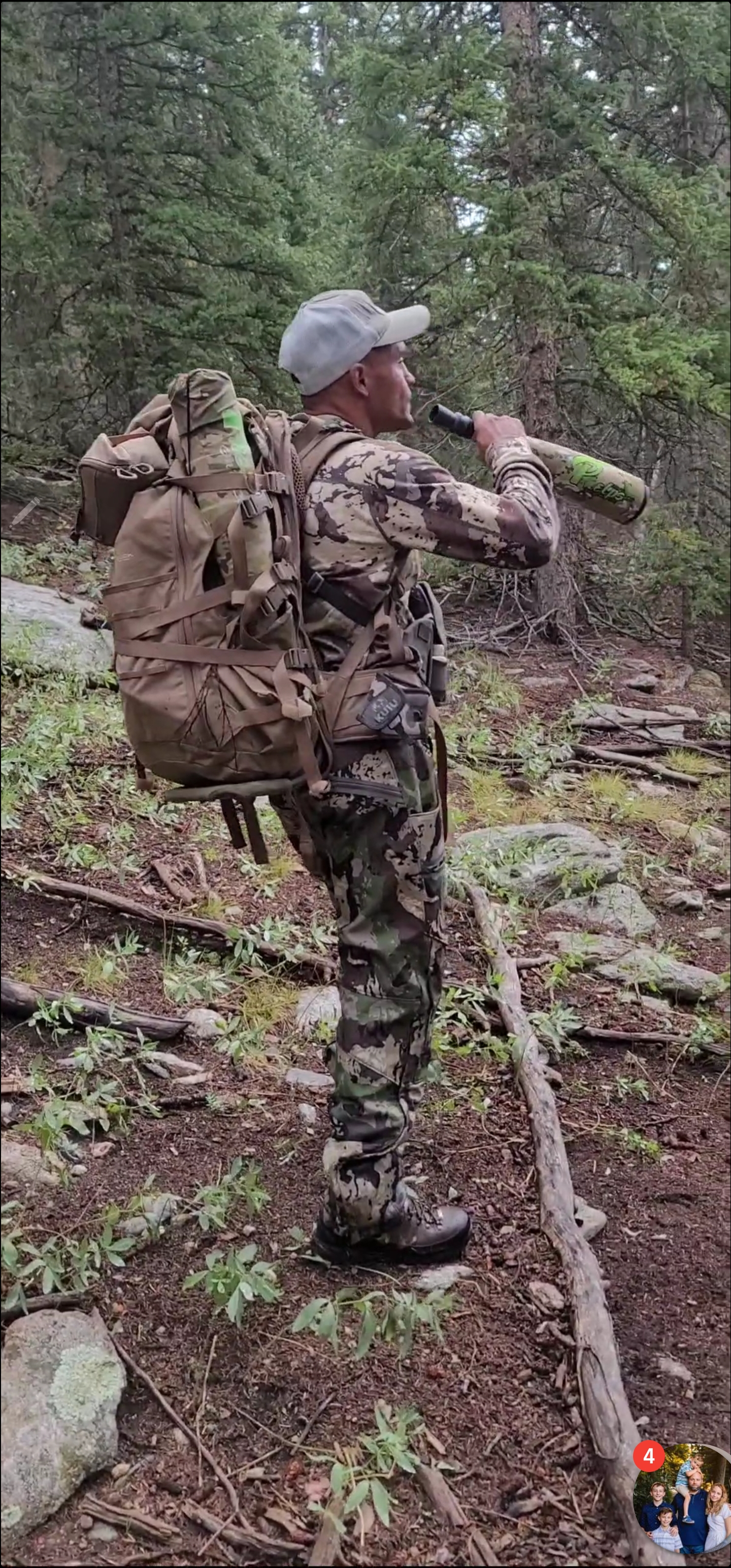
After you have mastered the fundamental elk sounds, cow mews, calf chirps, and a locate bugle, start working on more challenging calls. I wish I had done this earlier in my career. It would have helped me kill more herd and nice satellite bulls.
Some of the hardest elk sounds to make are, chuckles, grunts, lip bawls, barks and estrus screams. Like basic elk calls, these more advanced sounds stem from the basic calls you have already mastered.
The more difficult forms of elk talk all stem from these same principles. Adding emotion to your basic calls the way elk do changes the game of how you are communicating with elk in your area. It even affects how they communicate back to you.
That’s why so many advanced elk hunters use these advanced calls within their calling sequence. In most cases, these more advanced calls are used to respond to an elk.
Like basic elk calls, I had to study what all these sounds meant, how they should be used, what works for me and does not work for me when I am in the woods.
It IS possible to learn how to speak the elk language. Take the time to learn the sounds used by a calf, cow and bull elk. Know their meanings and be able to speak their language. It will help you to consistently bring elk into close encounters.
YouTube video on Strategy 4
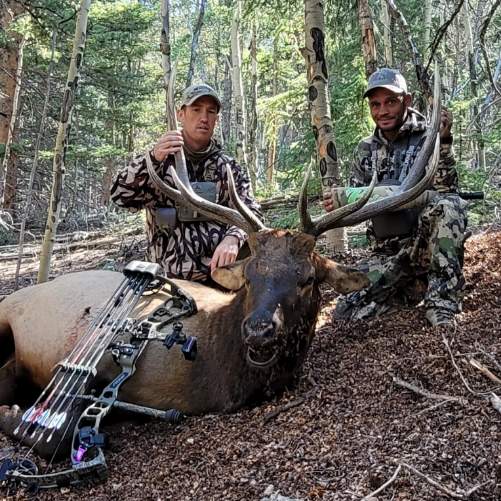
Hunting as a team is better than hunting elk solo! This statement will stir some hot debate. However, with my years of hunting experience, I have found it to be true.
I have hunted for years by myself and have had my fair share of success. However, hunting with a team of 2-3 (total), has increased my success rates of harvesting mature bulls.
Now, with that being said, if you are hunting with a partner that does not know how to call and communicate with elk, you might as well hunt by yourself. Politely ask them to stay at camp to get dinner ready…
All kidding aside, the first time I was to be the “shooter” during a team elk hunt I realized some or most of my hunting partners did not know how to speak to elk like I did. This simply resulted in me having to do everything on the hunt.
The result was another hunter following me along in the woods, in close proximity, spreading more scent, and not really able to help me when I needed elk calling support.
If you find yourself in this situation, honestly evaluate your hunting partner's commitment. If you want to improve your chances of consistently getting close to elk, you may have to limit the people who want to hunt with you. Set minimum standards/requirements of the people you choose to hunt with.
Hunting with a partner, if done right and “following the playbook”, will make you more successful than being alone in the woods. The reason I swear by team/partner hunting vs. solo elk hunting is due to a situation that ends most solo hunts, “the elk hang-up point”.
The “hang-up point” most often occurs when calling has brought elk in close, but not close enough for an ethical archery shot. The answer to better negotiate “elk hang-ups” is hunting with a good team/partner.
Yes, when hunting solo you can try to project your calls behind you to give the illusion that the animals you are pretending to be are further away. This strategy may pull elk in closer, but more times than not, elk still hang-up. At these distances, it’s tough to find opportunities to move to a better position, close the distance and eliminate the hang-up.
Overall, hunting with a partner will cut that “hang-up” point in half or even eliminate it all together.
Communicate with the bull, using proper calls, and be ready! This routine will surely bring more elk close, increasing your chances of successfully harvesting more mature bulls!
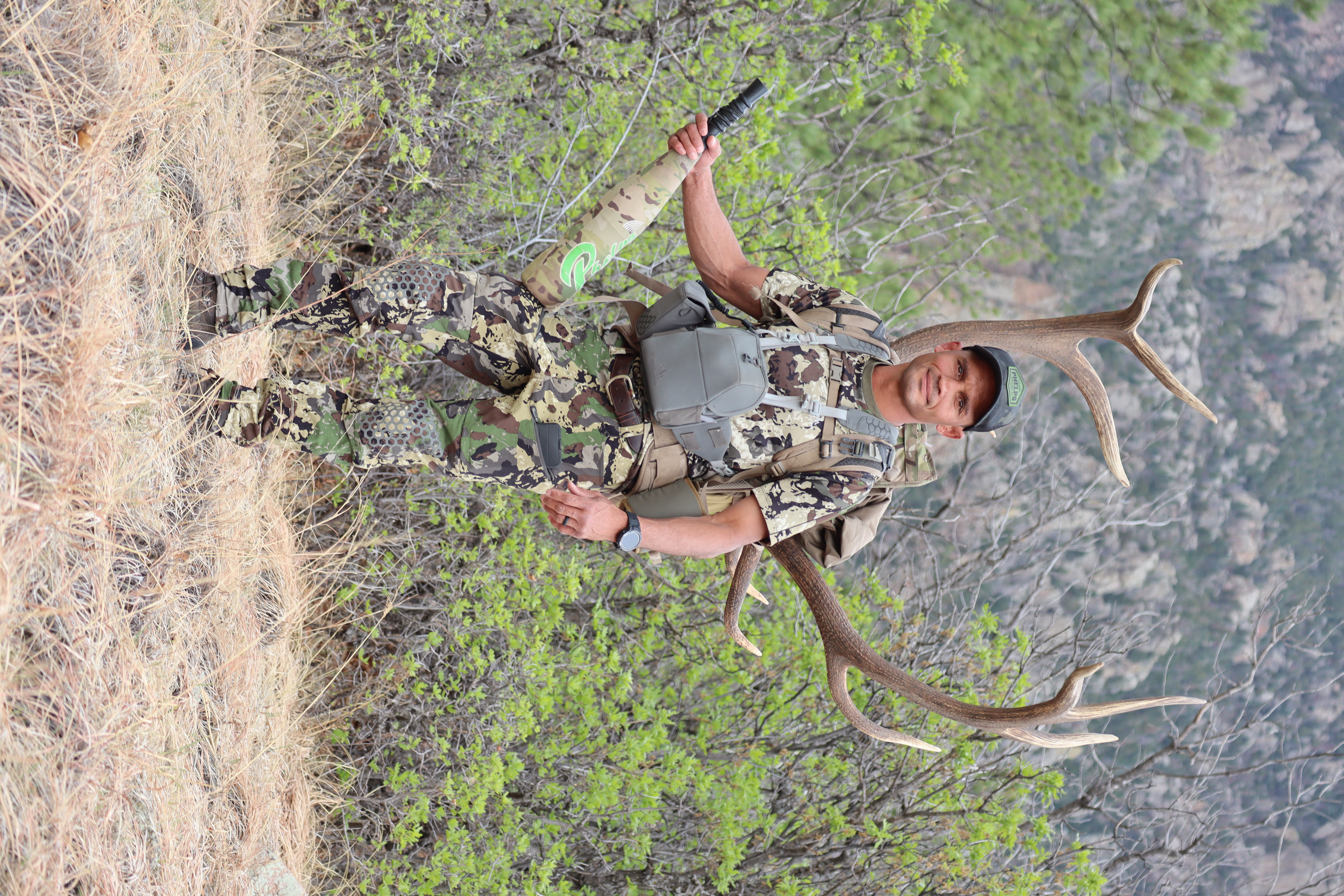
I have found having will, or competitive nature, is not something you’re just born with. It's not something you can just be told about, or read about. It is something that you have to learn through life experiences. Life experiences differ from person-to-person where moments of success and failure or even life and death shape them to be the people they are.
Those who did not participate in competitive sports as a youth may have gained their will or competitive nature from service in the military or other professional experiences. It’s a part of your mindset and personality that only you can change over time through more life experiences and having the ability to constantly push yourself, constantly work, and compete against yourself.
“How far are you willing to go?” It’s a question you have to constantly answer with an action.
I found my will and competitive nature at a young age competing in wrestling. I started wrestling at age 12 and went on to win many age level competitions and a few Nationals’ titles. Wrestling taught me how to push myself to the maximum limit, mentally and physically, which put me in positions to constantly win matches and win against myself.
The more I could defeat the little voice that nagged me to slow down, stop or quit, the more successful I was. I never wanted to lose or feel defeated. I hated the feeling so much that it fueled me to push myself even harder.
Also, as more time went on, the little voice became more quiet and easier to subdue. This is how I gained my will and competitive edge. It’s amazing how usefully and easily both have transferred into my hunting career.
I didn’t start hunting until I was in the 9th grade. The passion for it started as a small fire and quickly grew as an out of control wild fire. I have been able to make so many comparisons between wrestling and hunting that I could not get enough of both, especially elk hunting.
There’s nothing more exciting than hearing a majestic monster like a mature bull elk announcing itself in the woods. It’s like hearing your name called and your arm raised to signal your victory on the Worlds wrestling stage! Even today, I am driven by hard work and dedication for this sport and way of life.
I owe all of my success on and off the mat too finding my will or competitive nature at a young age.
The tips I have shared with you are the things I have learned along my journey to becoming a successful elk hunter. 23 years of wrestling and 6 years as a coach have given me the drive I needed to always want to win.
With this mindset permanently cemented within my core, I have coined the phrases, “You don’t know until you go” & “Next Ridge”! Fight that inner voice! Push yourself! You will be surprised what you are truly capable of doing!
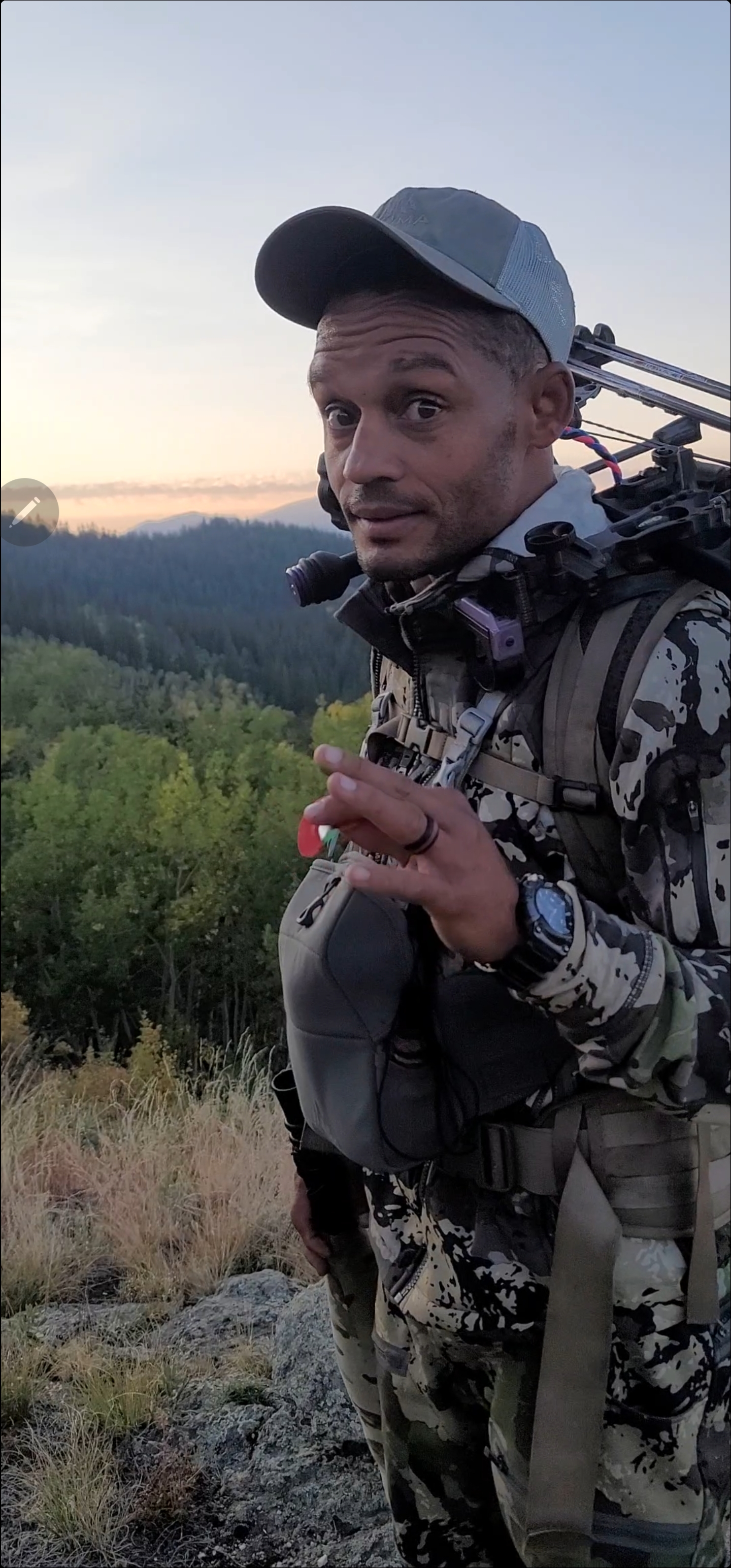
You don’t have to practice for elk calling competitions. Practice whenever and wherever you can, at home alone, in the backyard, driving to and from work. Have fun, but be careful, because when I do this I can drive my family crazy. You may too!
When I first began learning and practicing elk calls, I would try to find the best examples of elk sounds and figure out what they meant. I began to question the purpose of the sounds, and how some sounds related to others. Soon I learned how to relate elk sounds to human conversation and phrases. Things really began to make more sense to me.
More recently, I watch professionals like Dirk Durham and Jason Phelps on YouTube to fine tune my calls. I try my best to emulate the conversation of their bull and cow elk sounds.
Today, it can almost be too overwhelming to find “Good” elk hunting footage because there is an abundance out there. These past few years, a revolution of independent hunting film makers has been born. There is so much material out there now, that it can be difficult and frustrating to find the right videos needed to sharpen your hunting skills.
Many times, I have watched 5 to 10 minutes of a film and realized that the information was not something I was looking for or useful. This gets frustrating when it happens over-and-over again.
If you are like me, time is very precious. If you would like to streamline your discovery of useful content go find a program called The Elk Collective. This program actually does the searching for you!
The Elk Collective constantly adds new videos, content, strategies and tips about elk hunting. I rely on this web resource as my one-stop-shop for research and practice. I would encourage you to check them out too!
Just like any great athlete, it’s wise to use film to see the good and bad examples of elk calling and elk hunting. Watching video can be a great way to learn and support your goals of becoming a better caller and hunter!
Even though I have been successful from the start of my elk hunting career, it did not happen without practice. I did not wait until September to plan, prepare and practice. I did that 11 months prior to the season beginning. I continue to follow this model even today.
If you want to truly be good at something you have to commit fully to it. Every day you have to practice or do something that will make you better in the elk woods. If you begin to think in this manner, you will also see first-hand what each day’s investment will do for you come next September!
Please check out The Elk Collective, it is a video driven collection of elk hunting knowledge from some of the best elk hunts in North America. You can use my promo code to get 10% off (Hodge20) www.elkcollective.com
Another great question I get is what elk calls do I use? I use Phelps Game Calls. What I love about their calls is you do not have to break them in, they are ready to use right out of the package.
One of the most important pieces to my success is my gear! Great, not good gear is a necessity when coming out west to hunt elk. I choose to wear Pnuma! Hands down the best gear on the market, if you are looking for great gear with a lifetime warranty use this code online and save 20% (Hodge20). www.pnuma.com
If you have any additional questions please feel free to ask me anything about elk hunting. You can find me on any of the social media platforms listed below.
Jermaine Hodge is the 2019 Men's Division, RMEF World Elk Calling Champion and co-owner of Colorado High Altitude Hunters, LLC. He is a U.S. Soldier, US. Army - Greco-Roman Wrestler, five-time U.S. National Team member, Wrestling Coach, family man, and avid outdoorsmen. In 16 years of Colorado elk hunting, Jermaine has been rewarded with 19 harvested elk! He admits, most years were a true struggle and the fear of failure drove him to push his mind and body to its limit to get the job done!
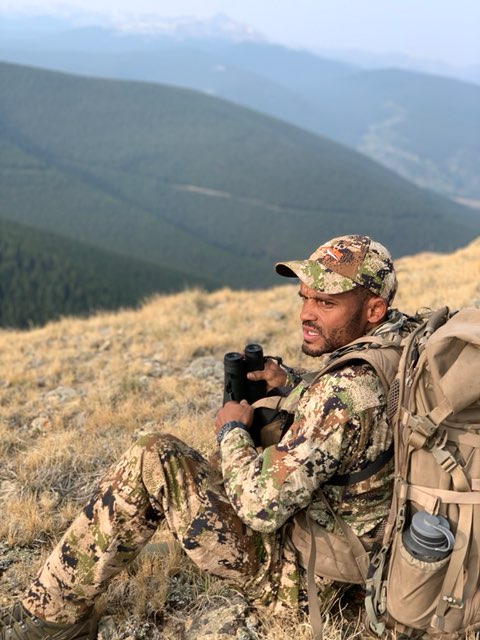
Jermain Hodge on Facebook
Colorado High Altitude Hunters on Instagram
Colorado High Altitude Hunters on Facebook
Colorado High Altitude Hunters
Go Back Like many hunters, I didn’t start hunting elk at an early age. I moved to Colorado in 2004 and truly fell in love with hunting, especially elk hunting. The first thing I learned, on my first elk hunt, was the importance of having proper equipment and being in good physical shape. It’s a good thing I’m an active wrestler.
Although having great gear and being in shape are important (and natural to me), getting close to elk is just as important. Keep reading to discover the strategies that have worked best for me. They are the ones I still use today.
Strategy 1: Calling Elk With Open Reeds (Fundamental Level)
If you have a hard time using a mouth diaphragm, try an open reed elk call. I began with open reed elk calls and found they were easier to master than the mouth diaphragm. I still use open reeds today with great success! Phelps Game Calls make a great product for elk and other types of game to “bring’em in close”!When it’s hard to get the elk talking, open reed calls can be the game changer you are looking for. I used to wear a duck hunting lanyard with five different elk open reeds attached to it. Each call would be used in my calling sequence as I sat strategically positioned in the mountains.
Each reed call has its own unique sound and tone. They are different in size and shape and mine were made by different companies. You can use this strategy to create “herd talk” to sound like a small group of cows talking to each other. Be careful, this strategy will not only bring elk close, but many hunters too!
Although this is a “fundamental strategy” it is very effective. The first time you experience real elk communication between yourself and live animals you will be hooked on elk hunting. I was and I am! This is a great strategy to have your first “herd talk” experience.
YouTube video on Strategy 1
Strategy 2: Calling Elk With Built-in Reed Tubes (Fundamental Level)
If mouth diaphragms are a problem, try a bugle tube with a built-in reed. Open reed calls give you good cow sounds. Built-in reed tube devices can create the sounds needed to locate a bull elk in the woods.One of the first tubes I used was the Terminator, by Primos. An even better option and new to the market today is the EZ bugle by Phelps Game Calls. Built-in reed tubes have helped me to locate some of the first bulls I ever had the chance to harvest. The built-in reed tubes can give you a real sense of where elk were and where they were going.
After using the built-in reed tubes to locate elk, you can then use your open reed calls to bring them in closer. When I started calling elk, I had to rely on these calls heavily to communicate with elk. You can be successful with these strategies too!
YouTube video on Strategy 2
Strategy 3: Calling Cow & Calf Elk With Mouth Diaphragms (Intermediate Level)
Cow Calls
When learning how to use a mouth diaphragm call, start by learning basic cow talk. You will want to master the basic cow call. Here’s why. The root of all elk talk is the cow call (mew - eeooooo).Chuckles produced by bulls are basically quick repetitive cow calls (mews). Bull location calls are elongated cow mews. Calf calls are high-pitched and shorter cow mews. Hopefully, now you understand the importance of mastering the cow call. It is the foundation of all other calls you may choose to use.
I would suggest you master this call until you feel it’s perfect. Then practice it again and again! Continue to do this until you’re ready to move onto the next sound(s). Basic calls will bring elk in close year in and year out.
Calf Calls
One of my favorite elk sounds, and one I use a lot in the woods, are calf calls. I have killed more bulls using calf calls than any other. Calf calls can pull groups of elk in close.I can’t tell you how many times, when using a calf call, that a group of cows have come in close. Take a guess at who is following close behind the cows? That’s right…a herd or satellite bull. Here’s why.
There is nothing more annoying to bulls when their female companions decide to leave to check on a lost calf. Of course the bulls are going to follow the cows to keep a close eye on them. They don’t want any of the cows in their harem to wander off!
This is exactly why a calf call is so important for hunters. Look up Joel Turner. He uses this same strategy. In my opinion, Joel is one of the best at calling bulls in with just calf sounds.
YouTube video on Strategy 3

Strategy 4: Calling Elk With Mouth Diaphragms (Advanced Level)
After you have mastered the fundamental elk sounds, cow mews, calf chirps, and a locate bugle, start working on more challenging calls. I wish I had done this earlier in my career. It would have helped me kill more herd and nice satellite bulls.
Some of the hardest elk sounds to make are, chuckles, grunts, lip bawls, barks and estrus screams. Like basic elk calls, these more advanced sounds stem from the basic calls you have already mastered.
Add Emotion
These more advanced calls also tend to have more voice, emotion and expression within them. Like humans, elk do not speak at a monotone level. We use voice inflection when we talk to emphasize important points, express our love, anger and frustration. Elk are no different!The more difficult forms of elk talk all stem from these same principles. Adding emotion to your basic calls the way elk do changes the game of how you are communicating with elk in your area. It even affects how they communicate back to you.
That’s why so many advanced elk hunters use these advanced calls within their calling sequence. In most cases, these more advanced calls are used to respond to an elk.
Like basic elk calls, I had to study what all these sounds meant, how they should be used, what works for me and does not work for me when I am in the woods.
It IS possible to learn how to speak the elk language. Take the time to learn the sounds used by a calf, cow and bull elk. Know their meanings and be able to speak their language. It will help you to consistently bring elk into close encounters.
YouTube video on Strategy 4
Strategy 5: Hunting with Teammates vs. Solo Hunting (Advanced Level)

Hunting as a team is better than hunting elk solo! This statement will stir some hot debate. However, with my years of hunting experience, I have found it to be true.
I have hunted for years by myself and have had my fair share of success. However, hunting with a team of 2-3 (total), has increased my success rates of harvesting mature bulls.
Now, with that being said, if you are hunting with a partner that does not know how to call and communicate with elk, you might as well hunt by yourself. Politely ask them to stay at camp to get dinner ready…
All kidding aside, the first time I was to be the “shooter” during a team elk hunt I realized some or most of my hunting partners did not know how to speak to elk like I did. This simply resulted in me having to do everything on the hunt.
The result was another hunter following me along in the woods, in close proximity, spreading more scent, and not really able to help me when I needed elk calling support.
If you find yourself in this situation, honestly evaluate your hunting partner's commitment. If you want to improve your chances of consistently getting close to elk, you may have to limit the people who want to hunt with you. Set minimum standards/requirements of the people you choose to hunt with.
Hunting with a partner, if done right and “following the playbook”, will make you more successful than being alone in the woods. The reason I swear by team/partner hunting vs. solo elk hunting is due to a situation that ends most solo hunts, “the elk hang-up point”.
The “hang-up point” most often occurs when calling has brought elk in close, but not close enough for an ethical archery shot. The answer to better negotiate “elk hang-ups” is hunting with a good team/partner.
Yes, when hunting solo you can try to project your calls behind you to give the illusion that the animals you are pretending to be are further away. This strategy may pull elk in closer, but more times than not, elk still hang-up. At these distances, it’s tough to find opportunities to move to a better position, close the distance and eliminate the hang-up.
Overall, hunting with a partner will cut that “hang-up” point in half or even eliminate it all together.
Team/Partner Strategy
Try this strategy to improve the success of your elk hunts! Locate a herd or bachelor bull and get set up. When you have a teammate, position the caller about 100 yards behind the shooter. It’s important the shooter be between the caller and the elk your team is targeting. Maintaining this positioning should bring the elk right to the “hang-up” distance where the shooter is waiting.Communicate with the bull, using proper calls, and be ready! This routine will surely bring more elk close, increasing your chances of successfully harvesting more mature bulls!
PRO TIPS: Will Power and The Competitive Edge (All Levels)
The “Will” or “Competitive Nature” to constantly go, not give up and fight that little voice in the back of your head that is telling you to slow down, stop or quit, is the difference between people who just accept failure and those who get it done every year.I have found having will, or competitive nature, is not something you’re just born with. It's not something you can just be told about, or read about. It is something that you have to learn through life experiences. Life experiences differ from person-to-person where moments of success and failure or even life and death shape them to be the people they are.
Those who did not participate in competitive sports as a youth may have gained their will or competitive nature from service in the military or other professional experiences. It’s a part of your mindset and personality that only you can change over time through more life experiences and having the ability to constantly push yourself, constantly work, and compete against yourself.
“How far are you willing to go?” It’s a question you have to constantly answer with an action.
I found my will and competitive nature at a young age competing in wrestling. I started wrestling at age 12 and went on to win many age level competitions and a few Nationals’ titles. Wrestling taught me how to push myself to the maximum limit, mentally and physically, which put me in positions to constantly win matches and win against myself.
The more I could defeat the little voice that nagged me to slow down, stop or quit, the more successful I was. I never wanted to lose or feel defeated. I hated the feeling so much that it fueled me to push myself even harder.
Also, as more time went on, the little voice became more quiet and easier to subdue. This is how I gained my will and competitive edge. It’s amazing how usefully and easily both have transferred into my hunting career.
I didn’t start hunting until I was in the 9th grade. The passion for it started as a small fire and quickly grew as an out of control wild fire. I have been able to make so many comparisons between wrestling and hunting that I could not get enough of both, especially elk hunting.
There’s nothing more exciting than hearing a majestic monster like a mature bull elk announcing itself in the woods. It’s like hearing your name called and your arm raised to signal your victory on the Worlds wrestling stage! Even today, I am driven by hard work and dedication for this sport and way of life.
I owe all of my success on and off the mat too finding my will or competitive nature at a young age.
The tips I have shared with you are the things I have learned along my journey to becoming a successful elk hunter. 23 years of wrestling and 6 years as a coach have given me the drive I needed to always want to win.
With this mindset permanently cemented within my core, I have coined the phrases, “You don’t know until you go” & “Next Ridge”! Fight that inner voice! Push yourself! You will be surprised what you are truly capable of doing!

PRO TIPS: Practice And Research (All Levels)
Practice
To be good at anything you must practice! I spent 30 minutes a day practicing my elk calls in order to sound the best I can while hunting. You can get started by simply practicing sounding like an elk. Mimic them talking to each other in a variety of situations.You don’t have to practice for elk calling competitions. Practice whenever and wherever you can, at home alone, in the backyard, driving to and from work. Have fun, but be careful, because when I do this I can drive my family crazy. You may too!
Research
Discover more by watching YouTube videos, listen to podcasts and watch TV shows about elk hunting. I’ve used these resources to help me imitate the sounds elk make, not hunters.When I first began learning and practicing elk calls, I would try to find the best examples of elk sounds and figure out what they meant. I began to question the purpose of the sounds, and how some sounds related to others. Soon I learned how to relate elk sounds to human conversation and phrases. Things really began to make more sense to me.
More recently, I watch professionals like Dirk Durham and Jason Phelps on YouTube to fine tune my calls. I try my best to emulate the conversation of their bull and cow elk sounds.
Today, it can almost be too overwhelming to find “Good” elk hunting footage because there is an abundance out there. These past few years, a revolution of independent hunting film makers has been born. There is so much material out there now, that it can be difficult and frustrating to find the right videos needed to sharpen your hunting skills.
Many times, I have watched 5 to 10 minutes of a film and realized that the information was not something I was looking for or useful. This gets frustrating when it happens over-and-over again.
If you are like me, time is very precious. If you would like to streamline your discovery of useful content go find a program called The Elk Collective. This program actually does the searching for you!
The Elk Collective constantly adds new videos, content, strategies and tips about elk hunting. I rely on this web resource as my one-stop-shop for research and practice. I would encourage you to check them out too!
Just like any great athlete, it’s wise to use film to see the good and bad examples of elk calling and elk hunting. Watching video can be a great way to learn and support your goals of becoming a better caller and hunter!
Let’s Wrap Up
My theory of elk hunting stands as, “Know what you know and be a sponge to soak up even more knowledge. It is years of woodmanship that yields success.” No matter your skill and knowledge level, I encourage you to seek more knowledge to develop your skills. It’s the secret to my success. Constantly seeking more knowledge has helped me get where I am and where I want to go.Even though I have been successful from the start of my elk hunting career, it did not happen without practice. I did not wait until September to plan, prepare and practice. I did that 11 months prior to the season beginning. I continue to follow this model even today.
If you want to truly be good at something you have to commit fully to it. Every day you have to practice or do something that will make you better in the elk woods. If you begin to think in this manner, you will also see first-hand what each day’s investment will do for you come next September!
Please check out The Elk Collective, it is a video driven collection of elk hunting knowledge from some of the best elk hunts in North America. You can use my promo code to get 10% off (Hodge20) www.elkcollective.com
Another great question I get is what elk calls do I use? I use Phelps Game Calls. What I love about their calls is you do not have to break them in, they are ready to use right out of the package.
One of the most important pieces to my success is my gear! Great, not good gear is a necessity when coming out west to hunt elk. I choose to wear Pnuma! Hands down the best gear on the market, if you are looking for great gear with a lifetime warranty use this code online and save 20% (Hodge20). www.pnuma.com
If you have any additional questions please feel free to ask me anything about elk hunting. You can find me on any of the social media platforms listed below.
Jermaine Hodge is the 2019 Men's Division, RMEF World Elk Calling Champion and co-owner of Colorado High Altitude Hunters, LLC. He is a U.S. Soldier, US. Army - Greco-Roman Wrestler, five-time U.S. National Team member, Wrestling Coach, family man, and avid outdoorsmen. In 16 years of Colorado elk hunting, Jermaine has been rewarded with 19 harvested elk! He admits, most years were a true struggle and the fear of failure drove him to push his mind and body to its limit to get the job done!

To Follow Jermain Hodge:
Jermain Hodge on InstagramJermain Hodge on Facebook
Colorado High Altitude Hunters on Instagram
Colorado High Altitude Hunters on Facebook
Colorado High Altitude Hunters
